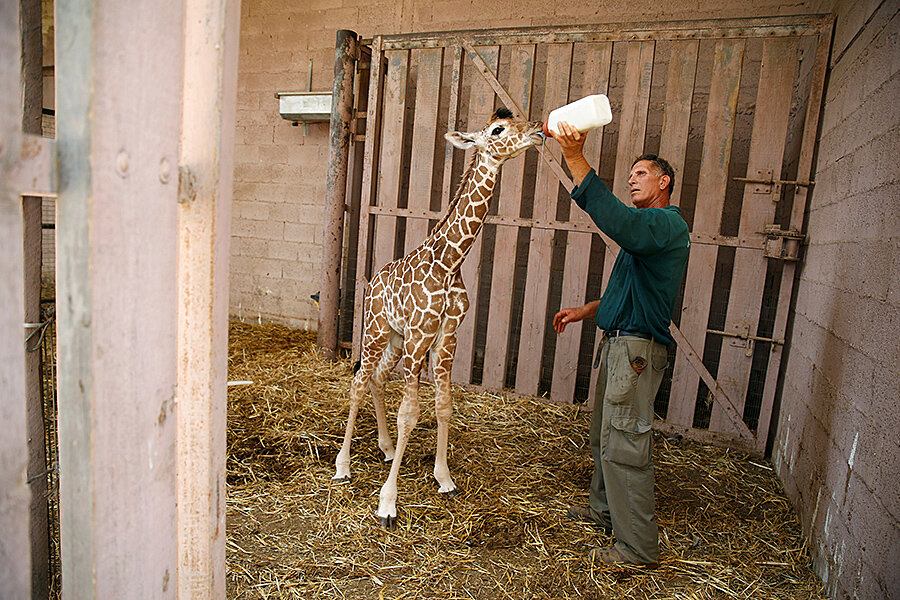England’s Paignton Zoo: Tapping vertical farming to feed animals
Loading...
The Paignton Zoo, located in Devon, England, utilizes vertical farming practices to nourish some of its approximately 2,000 animals. Since 2009, this hydroponic vertical growing system, VertiCrop, has diversified animal feed while increasing its nutritional density.
The British and Irish Association of Zoos and Aquariums (BIAZA) says that one of “the main rationales for the project was that Paignton Zoo as a large visitor attraction provides an ideal environment to trial and showcase a working model of the Verticrop system in Europe. This is at a time when there is a growing emphasis on food security, the limited extent of natural resources, and the implications of climate change on worldwide crop production. [Also,] the project represents the first zoo-based sustainable growing laboratory, showcasing an evolutionary step in the way crops can be grown for the public.”
The zoo’s hydroponic growing system is made up of different layers of crops, including lettuce and spinach. The sun’s rays hit the stacked plants at different points. For example, plants at the top of the stack receive the majority of direct sunlight. Plants at the bottom of the stack receive the minority of direct sunlight.
According to the U.N. Food and Agriculture Organization (FAO), “the major advantage with a [hydroponics] system is the absence of weeds and other soil- borne pests, no toxic pesticide residue, better use of water, better control over nutrient and oxygen, increased crop quality and yields.”
These increased yields are a result of the less than 24-hour turnover time from crop harvest to consumption at the Paignton Zoo. As a result, the animal feed is nutrient dense. Vertical farmers use the bounties, rather than chemical supplements, if an animal is lacking in a certain nutrient.
The Paignton Zoo says, “VertiCrop combines low food miles, high-density production, and the reduced use of resources like land and water—and it means we can produce fresh, tasty herbs and leaf vegetables for our animals right here in the Zoo!”
This vertical farm tests how animals react to different crops. For example, Bright Lights, a variety of chard with a vibrant stem, was cultivated. Vertical farmers were interested in whether the apes were attracted to its vibrancy, similar to their attraction to carrots’ color.
According to Kevin Frediani, the Curator of Plants and Gardens at the Paignton Zoo Environmental Park, “Within the zoo it [the VertiCrop project] has helped to reduce reliance on outside food supplies for the zoo’s animals, reduce costs, and improve quality and security (Frediani, 2011a, b). Outside the zoo, it provides the potential to be rolled out as a sustainable business model that enables collective localized food provision while providing commercial leverage for communities to help sustain themselves.”
To access Kevin Frediani’s Volume 10, Number Two, July 2013 “Paignton Zoo Environmental Parks vertical farming project: a novel approach to conservation education through an intensive agricultural exhibit” document, click here.
This story originally appeared on Food Tank.







